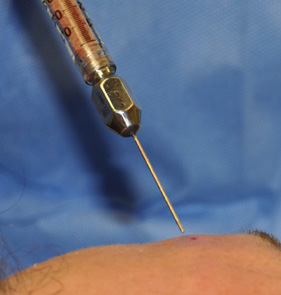Radiation for a variety of head and neck cancers is well known to affect all tissues in its path. Since the parotid gland frequently is involved in radiation portals, it receives unintentional radiation and suffers the side effects of such exposure. This almost always causes some degree of dry mouth or xerostomia. When xerostomia is significant enough, it can have a major impact on the patient’s quality of life.
Radiation-induced xerostomia does not really have an effective treatment other than palliative therapies. A wide variety of salivary stimulants exist from mechanical, chemical, electrical and pharmacologic agents to actual salivary substitutes. But dry mouth from irradiation has significant and historically irreversible gland fibrosis and any form of salivary stimulation is not going to be effective. Some recent studies have shown that acupuncture can provide some relief in irradiated parotid gland xerostomia but its effectiveness and mechanism of action has not been fully studied.
Multiple experimental studies have shown that various growth factors, such as IGF-1, have the capability to partiallly reverse radiation-induced salivary gland dysfunction. Irradiated animals have shown improved salivary flow rates within thirty days after an injected treatment and normal flow rates within three months thereafter. The mechanism of action is the restoration of functioning acinar cells and their proliferation and improved amylase production.
Unfortunately the availability of commercially-produced growth factors for injection treatments does not currently exist. But every patient has their own store of growth factors and a myriad of other regenerative materials such as stem cells… and it lies right beneath the skin in some of the most obvious areas….their own fat.

It would be seem very logical and safe to consider fat injections into the irradiated parotid gland in the treatment of dry mouth symptoms. Could fat injections bring the irradiated parotid gland partially back to life? Its experience elsewhere in the body suggests that the potential is there. A small amount of fat, 3cc to 5ccs of concentrate, is all that would be needed to be placed into the body of the gland as well as into the overlying and surrounding subcutaneous tissues. Most likely a series of fat injections spaced months apart would produce the best chance of success and some level of increased salivary production.
Dr. Barry Eppley
Indianapolis, Indiana


